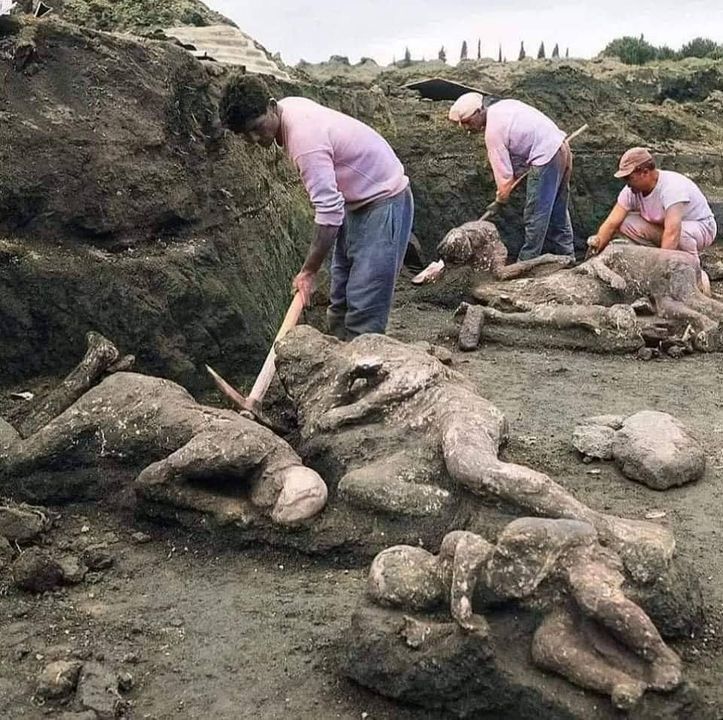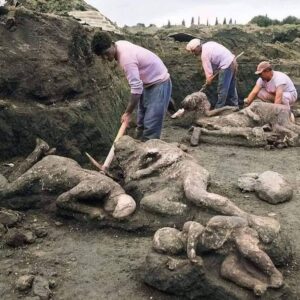
The Catastrophic Pompeii Eruption: A Day That Buried a Roman City in Time

Introduction
In 79 AD, the catastrophic Pompeii eruption of Mount Vesuvius unfolded near the Bay of Naples. A seemingly peaceful volcano erupted with devastating fury, unleashing a towering ash cloud that choked the sky. Raining down pumice and ash, it blanketed the surrounding Roman city of Pompeii. Superheated pyroclastic surges, a nightmarish cocktail of ash and gas, swept through the city at breakneck speed, leaving a trail of destruction and death. Pompeii wasn’t alone. Nearby settlements like Herculaneum suffered similar fates, though by different volcanic phenomena.
A City Entombed in Ash: Pompeii’s Unforeseen Preservation
While the eruption spelled doom for Pompeii’s inhabitants, it also had an unintended consequence: preservation. Buried under meters of volcanic ash, the city became a time capsule, sealed away from the ravages of time. For centuries, Pompeii remained lost and forgotten. It wasn’t until the 18th century that excavations began to unearth the city, revealing a remarkably intact Roman metropolis. Homes, shops, and even the haunting remains of victims, their forms preserved in the ash, offered a window into a bygone era.
Unearthing Pompeii’s Secrets: A Legacy of Discovery
Pompeii’s rediscovery has been a boon for archaeologists and history buffs alike. The city serves as an unparalleled archaeological treasure trove, offering insights into Roman architecture, daily life, social structure, and even art and culture. Every excavation unveils new details about this lost civilization. From frescoes adorning the walls of homes to perfectly preserved amphorae in shops, Pompeii speaks volumes about the lives of its inhabitants impacted by the Pompeii disaster.
A Frozen World Unveiled: Exploring Pompeii Today
Today, Pompeii stands as a testament to both the destructive power of nature and the enduring strength of human history. The city’s haunting beauty serves as a reminder of the fragility of life and the importance of preserving the past. As excavations continue, Pompeii’s story continues to unfold, offering us a glimpse into the vibrant world of a Roman city tragically frozen in time by the eruption of Mount Vesuvius.
Conclusion
The Pompeii eruption serves as a stark reminder of nature’s power and the impermanence of human existence. Yet, it also offers a unique opportunity to delve into the past and gain a deeper understanding of a lost civilization. Pompeii’s enduring legacy lies in its ability to bridge the gap between the ancient world and the present, offering us a glimpse into the lives of those who perished on that fateful day.





